L-R: Ching Neng Bin, Lim Peng Peng, Gan Choi Geok, Bernard Lee, Chan Meng Fye, Lee Kam
Boon, Choo Chiew Chin, Chew Leng Soon, Cindy Chong, See Beow Aun at Zhangjiajie National Forest Park.
Backpacking 26 days through 6 provinces in China Sichuan, Chongqing, Hubei, Hunan, Guizhou, Guangxi and 3 days in Hanoi, North Vietnam (29 Mar - 26 Apr 2011).
Day 11 (08.04.2011) Yichang to Zhangjiajie National Forest Park
The train arrived at Zhangjiajie station at 5.30am from Yichang. It was a horrible 4.5 hour train ride. Moreover, at the station we were harassed by a number of touts to get on their cars to town but we rejected all of them. We waited at the station until day break at 6.15am before we took the No.6 bus (Y1) to town. We had breakfast at a local MacDonald fast-food cafe for Y6.5pp. We took the 1 hour local bus 30km ride (Y10) to Zhangjiajie National Forest
Park. At Shenlin Park Entrance we checked in to Railway Hotel for
Y150 a room for 2 and Y180 a room for 3. After lunch, we explored the
Shenlin town at the foothill. At the same time, we also looked for a
better hotel.
Buried deep in the Hunan province, Zhangjiajie National Forest Park, part of the greater Wulingyuan Scenic Area, holds the esteemed title of being China's first UNESCO World Heritage Site. The unique geological formations that have formed over the aeons are almost unparalleled in their magnificence. Zhangjiajie National Forest Park is divided into Huangshizhai, Golden Whip Brook, Yuanjiajie, Yangjiajie, and Tianzi Mountain.
Stayed at Railway Hotel – Poor condition, smelly, cold and without heater.
We were all still looking good even after a torturous 4.5 hour night train ride arriving at Zhangjiajie station at 5.30am from Yichang. Moreover, at the Zhangjiajie station we were harassed by a number of touts to get on their cars to town but we rejected all of them. We waited at the station until day break at 6.15am before we took the No.6 bus (Y1) to town.
We waited at the Zhangjiajie train station until day break at 6.15am before we took the No.6 bus (Y1) to town.
We had breakfast at a local MacDonald fast-food cafe for Y6.5pp in Zhangjiajie.
Street name "Renmin Lu" means it is a 4-way junction in Zhangjiajie.
We took the 30km one hour local bus ride (Y10) up to Shenlin town at Zhangjiajie National Forest Park.
The serene 30km country road up to Shenlin town at Zhangjiajie National Forest Park.
The serene 30km country road up to Shenlin town at Zhangjiajie National Forest Park.
At the Shenlin bus station we walked towards the Railway Hotel.
Stayed at Shenlin Railway Hotel – poor condition, smelly, cold and without heater.
Stayed at Shenlin Railway Hotel for Y150 a room for 2 and Y180 a room for 3.
We explored the Shenlin town at the foothill and at the same time we looked for a better hotel.
The road side vendor in Shenlin town at Zhangjiajie National Forest Park.
The road side vendor in Shenlin town at Zhangjiajie National Forest Park.
Taking lunch in a shop in Shenlin town at Zhangjiajie National Forest Park.
After we finished our lunch, we only noticed how dirty is the shop kitchen at Shenlin town.
Walking around Shenlin town at Zhangjiajie National Forest Park.
The Cherry Blossom full bloom in Shenlin town at Zhangjiajie National Forest Park.
The Cherry Blossom full bloom in Shenlin town at Zhangjiajie National Forest Park.
The Cherry Blossom full bloom in Shenlin town at Zhangjiajie National Forest Park.
Exploring Shenlin town at Zhangjiajie National Forest Park.
Bautiful flowers in Shenlin town at Zhangjiajie National Forest Park.
Day 12 (09.04.2011) 20km trekking Zhangjiajie Forest Park from Shenlin Entrance
At 8am we moved over to Qilin hotel at Y210 for double and Y280 for triple bed. After noodle breakfast we walked to Forest Park Ticket Station (Y245 for 2 days fee). We started off by trekking to Huangshi Village and then proceeded to the peak passing through Dayanwu (Rock House), Six Wonders Pavilion, Book Case Shape, Great Man Talk, Peak of Lovers, Star Picking Tower, Five Fingers Peak, Gold Tortoise Swallowing and finally the pagoda at the peak. The trek covers a distance of 4.5km in 2hours 15minutes.
In the afternoon, we had own packed lunch before taking the cable car down (Y50 for normal and Y30 for senior citizen aged 60 and above- aged 70 is free). From the bottom cable-car station we took the park bus back to Shenlin Park entrance.
From there we trekked along Jinbian Stream to Crossing of Four Rivers and the distance covered is 6km in 1hour 45minutes on level ground. From Crossing Of Four Rivers we took a five minutes park bus to the Bailong Elevator which is vertical, however, we did not go up due to time constrain - the fee is Y56.
From Crossing of Four Rivers, 5 of us decided to backtrack back to Shenlin Park Entrance in 1hr 15minutes, and the other 5 decided to take the park bus to Wulinyuan Park Entrance. And from there they took a Y1 bus to Wulinyuan City Bus station first and a Y10 public bus to Shenlin town. We had dinner at 7pm in Shenlin town.
For today we have trekked for more than 20km in 9hours.
At 8am we moved over to Qilin hotel at Y210 for double and Y280 for triple bed. After noodle breakfast we walked to Forest Park Ticket Station (Y245 for 2 days fee).
L-R: See Beow Aun, Cindy Chong, Bernard Lee, Choo Chiew Chin, Lee Kam Boon, Lim Peng Peng, Gan Choi Geok, Ching Neng Bin, Chew Leng Soon at Forest Park Ticket Station (southwest door of Wulingyuan).
Local residence dressed up in traditional costume for photography at Oxygen Square (氧吧广场) Zhangjiajie Forest Park.
We started off by trekking to Huang Shi Village at Oxygen Square (氧吧广场) Zhangjiajie Forest Park. The sign marking the entrance to the trail up to Huangshi Village (黄石寨). The ascent takes about an hour, and you’ll see the Star-Picking Platform shortly after you make it to the top.
The sedan chair available for those who cannot walk up to Huang Shi Village at Zhangjiajie National Forest Park.
We started off by trekking to Huang Shi Village at Zhangjiajie National Forest Park.
Bernard Lee on the steps to Huang Shi Village at Zhangjiajie Forest Park.
Ching Neng Bin on the steps to Huang Shi Village at Zhangjiajie Forest Park.
Chan Meng Fye with his hands up at Zhangjiajie Forest Park, "I am tired and my knees wobble a bit, but okay".
Chew Leng Soon also with his hands up at Zhangjiajie Forest Park, "I am not tired and my knees are very strong".
The face of a porter on steps to Huang Shi Village at Zhangjiajie Forest Park.
At a viewing platform called Da Yan
Wu which has been carved into the side of a pillar at Zhangjiajie Forest Park.
A viewing platform called Da Yan
Wu at Zhangjiajie Forest Park.
At a viewing platform called Da Yan
Wu which has been carved into the side of a pillar at Zhangjiajie Forest Park.
Monkey at Zhangjiajie Forest Park.
Ching Neng Bin at Zhangjiajie Forest Park.
Zhangjiajie Forest Park.
Bookcase-shaped Peak at Zhangjiajie Forest Park.
Zhangjiajie Forest Park.
Zhangjiajie Forest Park.
Zhangjiajie Forest Park.
Gan Choi Geok at Zhangjiajie Forest Park.
Zhangjiajie Forest Park.
Chew Leng Soon admiring the Huang Shi Village tribal girls in their traditional dress at Zhangjiajie Forest Park.
To wondering path for mountain climbing at Zhangjiajie Forest Park.
Bernard Lee at Zhangjiajie Forest Park.
Zhangjiajie Forest Park.
The Huang Shi Village tribal girls in their traditional dress at Zhangjiajie Forest Park.
To star picking tower at Zhangjiajie Forest Park.
We completed the 3,878 steps stairway to the peak at this pagoda temple at Zhangjiajie Forest Park.
The bird's eye view of the pagoda temple compound from the balcony at Zhangjiajie Forest Park.
The pain of the climb was actually worth the magnificent view that greeted us at Zhangjiajie Forest Park.
The pain of the climb was actually worth the magnificent view that greeted us at Zhangjiajie Forest Park.
The pain of the climb was actually worth the magnificent view that greeted us at Zhangjiajie Forest Park.
The pain of the climb was actually worth the magnificent view that greeted us at Zhangjiajie Forest Park.
The Boar Rock at Zhangjiajie Forest Park.
To Five-fingers Peak at Zhangjiajie Forest Park.
Five-fingers Peak at Zhangjiajie Forest Park.
Five-fingers Peak at Zhangjiajie Forest Park.
Five-fingers Peak at Zhangjiajie Forest Park.
Five-fingers Peak at Zhangjiajie Forest Park.
Six wonders pavillion at Zhangjiajie Forest Park.
Six wonders pavillion at Zhangjiajie Forest Park.
Six wonders pavillion at Zhangjiajie Forest Park.
In the afternoon, we had own packed lunch before taking the cable car down (Y50 for normal and Y30 for senior citizen aged 60 and above-aged 70 is free). From the bottom cable-car station we took the park bus back to Oxygen Square (氧吧广场) Zhangjiajie Forest Park.
We took the cable car down (Y50 for normal, Y30 for senior citizen aged 60 and above 70 is free).
We took the cable car down Zhangjiajie Forest Park.
We took the cable car down Zhangjiajie Forest Park.
From the bottom cable-car station we took the park bus back to Oxygen Square (氧吧广场) Zhangjiajie Forest Park.
Trekking 6km from Oxygen Square (氧吧广场) through Golden Whip Stream (金鞭溪) to Water Winding Four Gates (水绕四门).
Following the 6km Golden Whip Stream (金鞭溪) walking path is like walking right along the stream, while at other times it was out of view. Occasionally, the trail would take us over small bridges to the opposite side of the water.
An old lady at Golden Whip Stream (金鞭溪) walking path.
An old lady at Golden Whip Stream (金鞭溪) walking path.
At Golden Whip Stream (金鞭溪) walking path.
Hovering clouds of mist floated over much of Golden Whip Stream (金鞭溪) walking path.
The Golden Whip Rock at Golden Whip Stream (金鞭溪) walking path.
The Golden Whip Rock at Golden Whip Stream (金鞭溪) walking path.
Stone Peak Reunion at Golden Whip Stream (金鞭溪) walking path.
Stone Peak Reunion at Golden Whip Stream (金鞭溪) walking path.
Golden Whip Stream (金鞭溪) walking path.
Golden Whip Stream (金鞭溪) walking path, we encountered the Spring of Longevity. This mineral-rich natural water source, according to local belief, brings health and long life.
The Golden Whip Rock at Golden Whip Stream (金鞭溪) walking path.
The Golden Whip Rock at Golden Whip Stream (金鞭溪) walking path.
The Golden Whip Rock at Golden Whip Stream (金鞭溪) walking path.
The Golden Whip Rock at Golden Whip Stream (金鞭溪) walking path.
One of these bridges offered a view of Zicao Pond, a pool of water in which locals would rinse off handmade paper during the Qing dynasty. Under certain lighting conditions, the pond may appear as purple,
One of these bridges offered a view of Zicao Pond at Golden Whip Stream (金鞭溪).
At Golden Whip Stream (金鞭溪) walking path.
At Golden Whip Stream (金鞭溪) walking path.
At Golden Whip Stream (金鞭溪) walking path.
At Golden Whip Stream (金鞭溪) walking path.
At Golden Whip Stream (金鞭溪) walking path.
At Golden Whip Stream (金鞭溪) walking path.
Taking a rest at Water Winding Four Gates (水绕四门) on the other end of Golden Whip Stream (金鞭溪) walking path.
At Golden Whip Stream (金鞭溪) walking path.
Ching Neng Bin at Water Winding Four Gates (水绕四门) (金鞭溪) walking path.
Chew Leng Soon at Water Winding Four Gates (水绕四门) (金鞭溪) walking path.
Lee Kam Boon with the girls at Water Winding Four Gates (水绕四门) (金鞭溪) walking path.
The Bailong Elevator is a glass elevator built onto the side of a huge cliff in the Wulingyuan area of Zhangjiajie that is 326m high. It is claimed to be the highest and heaviest outdoor elevator in the world.
Walking at Water Winding Four Gates (水绕四门) on the other end of Golden Whip Stream (金鞭溪) walking path.
The 326m high Bailong vertical elevator is the highest outdoor elevator in the world at Zhangjiajie Forest Park.
Day 13 (10.04.2011) Trekking Zhangjiajie from Wulingyuan entrance
After noodle breakfast, we took a bus (Y10) to Wulingyuan which is another entrance to the Park. We engaged a local guide (Y100) who happened to be in the bus to assist us in getting the Genli International Hotel (Y260 for 2 beds and Y280 for 3 beds), and also to purchase bus ticket to Fenghuang the following day at 2.30pm. We then went for the Zhangjiajie Park walking tour.
We first took the cable car (Y52) to Tianzishan. We then walked through the followings visiting: Marshal Helong Memorial Park, Fairy Presenting Flowers and Royal Writing Brush Peak. Then to Yuanjiajie, where the bandits used to hide out. We had our packed lunch at a stall in front of the entrance. We then walked to see the first world natural bridge and all the famous peaks shown in the movie Avatar.
At about 5.30pm we came back by the Bailong Elevator which is 326m high built on the cliff and descended to Crossing of Four Rivers and the bus took us back to Wulingyuan Park Entrance. From here we walked all the way and had the most expensive dinner (Y40) before getting to the hotel. After the long walk in Zhangjiajie Park we were all exhausted and slept early at 10pm.

The beautiful pagoda facade at the Wulingyuan park entrance of Zhangjiajie Park.
Walking towards the Wulingyuan cable-car station of Zhangjiajie Park.
We first took the cable car (Y52) to Tianzishan.
We took the cable car (Y52) to Tianzishan Mountain. We then walked through the followings visiting: Marshal Helong Memorial Park, Fairy Presenting Flowers and Royal Writing Brush Peak.
Tianzishan Mountain is a mountain located in Zhangjiajie in the Hunan Province of China.
Imperial Writing Brush Peaks at Tianzishan Mountain of Zhangjiajie National Forest Park.
In 1992, it was officially recognized as a UNESCO World Natural Heritage Site. Zhangjiajie is a green treasure house, the forest coverage rate is above 98%. Within the park, there are altogether more than 8,000 cliff mountains, towering into the sky like a dancing group, with various physical appearance and grand force of character. Its unique geographical features make it a popular tourist destination for both Chinese citizens and foreigners.
We climbed this pagoda for the bird's eye view of Tianzishan Mountain of Zhangjiajie National Forest Park.
Bird's eye view of Tianzishan Mountain of Zhangjiajie National Forest Park.
Tianzishan Mountain of Zhangjiajie National Forest Park.
Tianzishan Mountain of Zhangjiajie National Forest Park.
Stone peak forest at Tianzishan Mountain of Zhangjiajie National Forest Park.
Stone peak forest at Tianzishan Mountain of Zhangjiajie National Forest Park.
Stone peak forest at Tianzishan Mountain of Zhangjiajie National Forest Park.
Yunqing Rock at Tianzishan Mountain of Zhangjiajie National Forest Park.
Yunqing Rock at Tianzishan Mountain of Zhangjiajie National Forest Park.
Yunqing Rock at Tianzishan Mountain of Zhangjiajie National Forest Park.
At Tianzishan Mountain of Zhangjiajie National Forest Park.
Yunqing Rock at Tianzishan Mountain of Zhangjiajie National Forest Park.
Yunqing Rock at Tianzishan Mountain of Zhangjiajie National Forest Park.
Ching Neng Bin at Yunqing Rock, Tianzishan Mountain of Zhangjiajie National Forest Park.
Stone peak clusters at Tianzishan Mountain of Zhangjiajie National Forest Park.
Stone peak clusters at Tianzishan Mountain of Zhangjiajie National Forest Park.
We had our packed lunch at a stall in front of the entrance before trekking to Yuanjiajie where the bandits used to hide out.
Chinese tea leaf eggs are eggs steeped in a tea-infused liquid. Tea leaf eggs are marbled in appearance and flavorful.
Cock Heralding Day Break rock at Yuanjiajie Scenic Area.
Cock Heralding Day Break rock at Yuanjiajie Scenic Area.
Cock Heralding Day Break rock at Yuanjiajie Scenic Area.
Walked to Yuanjiajie scenic area where the mountain bandits used to hide-out.
Walked to Yuanjiajie scenic area where the mountain bandits used to hide-out.
Walked to Yuanjiajie scenic area where the mountain bandits used to hide-out.
The Oolong Village (乌龙寨) main entrance to the mountain bandits hideout at Yuanjiajie Scenic Area. Oolong Village at the elevation of about 1122 meters, is the most charming and dangerous place of Yangjiajie. It used to be brigands' home. You must hike through a thrilling road first, and along the way you may through a hole or along a crevice or sideway from a precipice. Then you need to walk for about 1 km to the village. It is also difficult to walk and demands caution.
Yangjiajie Scenic Area is located in the remote corner on the edge of the mountain where bandits used to live, and the pass leading to the top of the village is narrow and dangerous against the cliff. Finally, you will sigh how smart these brigands were for personal safety.
Yangjiajie Scenic Area is located in the remote corner on the edge of
the mountain where bandits used to live, and the pass
leading to the top of the village is narrow and dangerous against the
cliff.
Such a narrow crevasse provides good control to prevent attacks and a hideout.
Such a narrow crevasse provides good control to prevent attacks and the hideout by bandits.
This is the bandit's HQ on the peak. Oolong Village is one of the most dangerous attractions of Yangjiajie Scenic Area. It was a fastness of bandits in ancient times. The village is about 300 meters (330 yards) high and surrounded by steep cliffs. Only a 1,000-meter-long path leads to the village. Besides, a number of natural barriers stand along the path.
This is the pinnacle of the bandit's hideout and lookout at Tianbo Mansion.
Tourists can head for Tianbo Mansion from the Oolong Village through a hanging bridge between two peaks. The mansion is a good viewing platform to overlook the extremely beautiful scenery. There you can also see 10 parallel stone wall peaks standing among the green trees, like city walls.
Tourists can head for Tianbo Mansion from the Oolong Village through a
hanging bridge between two peaks. The mansion is a good viewing platform
to overlook the extremely beautiful scenery. There you can also see 10
parallel stone wall peaks standing among the green trees, like city
walls.
The parallel stone wall peaks standing among the green trees, like city
walls at Yangjiajie Scenic Area.
The parallel stone wall peaks at Yangjiajie Scenic Area.
The parallel stone wall peaks at Yangjiajie Scenic Area.

The 10 parallel stone wall peaks at Yangjiajie Scenic Area.
Taking a break after visiting the Yangjiajie Scenic Area.
To number one Natural Bridge in the world at Ten Miles Painting.
To number one Natural Bridge in the world at Ten Miles Painting.
The famous Avatar bridge known as (Tiansheng Qiao) which translates as Sky/Earth's No.1 Natural Bridge.
The Rocky Natural Bridge (Tiansheng Qiao) is also known as the First Bridge under the Sun because the natural rock bridge is high between two mountain peaks and is majestic. The bridge is only 2 meters wide, 5 meters thick, and spans 50 meters in the relative height of about 400 meters. Because of weathering and erosion. The lower rocks have collapsed and the Natural bridge was formed.
The narrow gorge at Yangjiajie Scenic Area. The floating ‘Hallelujah Mountains’ you saw on the movie Avatar were inspired by a real place on Earth.
The floating ‘Hallelujah Mountains’ you saw on the Avatar movie.
The floating ‘Hallelujah Mountains’ you saw on the Avatar movie.
One of the park's quartz-sandstone pillars, the 3,544-foot Southern Sky Column, had been officially renamed "Avatar Hallelujah Mountain" in honor of the eponymous film in January 2010.
Ching Neng Bin at the ancient flying reptile named after 'Avatar' creature.
Ching Neng Bin at the ancient flying reptile named after 'Avatar' creature.
The floating ‘Hallelujah Mountains’ you saw on the Avatar movie.
At about 5.30pm we came back by the Bailong Elevator which is 326m high
built on the cliff and descended to Crossing of Four Rivers and the bus
took us back to Wulingyuan Park Entrance.
Sleeping at Genli International Hotel (Y260 for 2 beds and Y280 for 3 beds)
Recommended route for 2 days visiting Zhangjiajie National Park
Day 1 should start from Wulingyuan park entrance by cable car up the mountain. Coming down take the elevator and then walk through the river of 4 crossing back to hotel in Shenlin.
Day 2 should start from Shenling park entrance. To walk up and down.
Day 14 (11.04.2011) Wulingyuan to Fenghuang Old City
Today we had a free and easy morning checking our internet mail (Y10 for 24hours) in the Genli International Hotel. Some had lunch outside the hotel and some had their packed lunch in the hotel. We took a bus (Y72) supposed to leave at 2.30pm but delayed to 3.30pm to Fenghuang Old City (234km away).
Arrived Fenghuang old city at 8.05pm, we went straight for dinner till 9pm. Meanwhile, Ms Gan and Lee Kam Boon went looking for hotel and found this PingShui XiangFeng Hotel by the Thouziang River side – strongly recommended as for Y70 a room for two, it includes heater, hot water, wifi, and washing machine + detergent. At 10.30pm we all went for a walk along the city by the river side.
There is a place in China where the time stops. A mystical place where mountains, water and blue skies prevail. A place hidden from tourists and favored by the Mother Nature. A world that is dominated by the green color. This place is called Fenghuang.
Today we had a free and easy morning checking our internet mail (Y10 for 24hours) in the Genli International Hotel.
We took a bus (Y72) supposed to leave at 2.30pm but delayed to 3.30pm to Fenghuang (234km away).
The river view on the bus from Wulingyuan to Fenghuang (234km away).
The river view on the bus from Wulingyuan to Fenghuang (234km away).
The bus dropped us here at this gate of Fenghuang old city.
Arrived Fenghuang old city at 8.05pm, we went straight for dinner till 9pm.
Arrived Fenghuang old city at 8.05pm, we went straight for dinner till 9pm.
The Fenghuang old city river night scenes is like a fairy land all brightly lighted up.
Every single Fenghuang old city house is decorated by flashy lanterns and colorful lights to look like a fairy tale.
Every single Fenghuang old city house is decorated by flashy lanterns and colorful lights to look like a fairy tale.
The reflection of the Fenghuang old city coloured lights on the dark water is amazing.
The reflection of the Fenghuang old city coloured lights on the dark water is amazing.
The reflection of the Fenghuang old city coloured lights on the dark water is amazing.
Every single Fenghuang old city house is decorated by flashy lanterns and colorful lights to look like a fairy tale.
Chinese pagodas and temples at Fenghuang old city houses.
The reflection of the Fenghuang old city coloured lights on the dark water is amazing.
PingShui XiangFeng Hotel by the Thouziang River side – strongly recommended as for Y70 a room for two, it includes heater, hot water, wifi, and washing machine + detergent.
Sleeping at PingShui XiangFeng Hotel by the Thouziang River side in Fenghuang old city.
Day 15 (12.04.2011) Fenghuang (day trip to NanHauShan National Forest Park)
The day trip cost Y70, started at 9am. We visited the NanHauShan National Forest Park which was about half an hour bus journey. At the park we visited the Miao Village to experience firsthand their culture and their way of living. Had lunch at a small Miao’s house and tasted some home brewed fruit wine which are also for sale.
The second visit was to the two spectacular waterfalls along a valley. We had to trek an hour along the stream to the 2nd waterfall before returning back to Fenghuang at 6.15pm and were dropped at the old part of the town to walk back to our guesthouse.
Sleeping at PingShui XiangFeng Hotel by the Thouziang River side in Fenghuang old city.
Fenghuang old city as one of the oldest unchanged Chinese towns is worth exploring for the sake of its ancient architecture and authentic Chinese look. Its scenery is breath-taking, no matter whether it’s night or daytime.
Fenghuang old city as one of the oldest unchanged Chinese towns is worth
exploring for the sake of its ancient architecture and authentic
Chinese look. Its scenery is breath-taking, no matter whether it’s night
or daytime.
Country view from Fenghuang old city to NanHauShan National Forest Park.
There are nine peaks and seven streams in Nanhua mountain, more than 500 kinds of animals and plants. Mountain grass deep, lush forest, wild flowers everywhere, clear spring, beautiful mountains and strange water, is the phoenix of the ancient eight.
At the NanHauShan National Forest Park we visited the Miao Village.
Walking towards the Miao village at NanHauShan National Forest Park.
Miao village girl carrying her baby on her back at NanHauShan National Forest Park.
Miao village food vendors at NanHauShan National Forest Park.
Local Miao girls in native attire singing songs to welcome the guests at NanHauShan National Forest Park.
Miao village house at NanHauShan National Forest Park.
Miao village grave at NanHauShan National Forest Park.
A large stone bridge at NanHauShan National Forest Park.
A Miao village below the large stone bridge at NanHauShan National Forest Park.
A large stone bridge at NanHauShan National Forest Park.
A large stone bridge at NanHauShan National Forest Park.
Wine tasting session at Miao village house at NanHauShan National Park.
Visiting Miao village house at NanHauShan National Forest Park.
Visiting Miao village house at NanHauShan National Forest Park.
Miao village lady at NanHauShan National Forest Park.
Miao village house door at NanHauShan National Forest Park.
Miao village house kitchen at NanHauShan National Forest Park.
Miao village house bed at NanHauShan National Forest Park.
Miao village house at NanHauShan National Forest Park.
Miao village stone house at NanHauShan National Forest Park.
Miao village lady at NanHauShan National Forest Park.
Miao village tourist at NanHauShan National Forest Park.
Miao village handicraft at NanHauShan National Forest Park.
Miao village cultural dance performance at NanHauShan National Forest Park.
A Miao worshiping ceremony before the cultural dance show at NanHauShan National Forest Park.
A Miao worshiping ceremony before the cultural dance show at NanHauShan National Forest Park.
A Miao village cultural dance show at NanHauShan National Forest Park.
A Miao village cultural dance show at NanHauShan National Forest Park.
Another Miao village wine drinking session at NanHauShan National Forest Park.
A fire eating performance.. this guy actually crunched the smouldering amber.
Look at his black tongue after the fire eating performance.
A Miao wedding ceremony at Miao village.
A Miao village cultural dance show at NanHauShan National Forest Park.
Our lunch on a low table with stools for 8 pax - the meat airing above us at the Miao village.
Our simple lunch of 6 Miao dishes at the Miao village.
Lee Kam Boon at NanHauShan National Forest Park.
A visit to a waterfall at NanHauShan National Park.
A canal system through the farm land at NanHauShan National Park.
Hiking at NanHauShan National Park.
A canal system through the farm land at NanHauShan National Park.
So many waterfalls along the trek at NanHauShan National Park.
The canal along the walking trek at NanHauShan National Park.
The canal along the walking trek at NanHauShan National Park.
The canal along the walking trek at NanHauShan National Park.
So many waterfalls along the trek at NanHauShan National Park.
So many waterfalls along the trek at NanHauShan National Park.
So many waterfalls along the trek at NanHauShan National Park.
A large cave along the trek at NanHauShan National Park.
A large cave along the trek at NanHauShan National Park.
We are back to the Fenghuang ancient city - this is the Red Bridge of Hong Jiao.
A restaurant at Fenghuang ancient city.
The alleys at Fenghuang ancient city.
The alleys at Fenghuang ancient city.
The alleys at Fenghuang ancient city.
The buildings at Fenghuang ancient city.
Tuo Jiang River at Fenghuang ancient city.
Tuo Jiang River at Fenghuang ancient city.
Tuo Jiang River at Fenghuang ancient city.
Tuo Jiang River at Fenghuang ancient city.
A girl at Tuo Jiang River, Fenghuang ancient city.
An old lady washing vegetables at Tuo Jiang River, Fenghuang ancient city.
A roasted pig at the restaurant at Fenghuang ancient city.
The best beef noodles beside our PingShui XiangFeng Hotel by the Thouziang River side at Fenghuang ancient city.
PingShui XiangFeng Hotel by the Thouziang River side at Fenghuang ancient city.
Dinner in style accompanied by a classical Chinese musician in Fenghuang ancient city.
Total expenses in China to-date is RM2,091 per person. End of part 4.






















































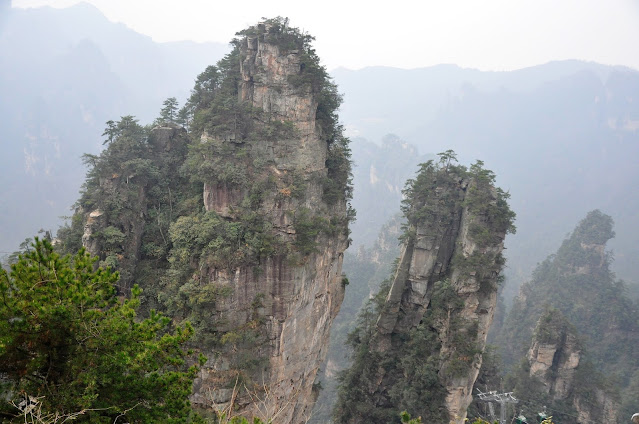











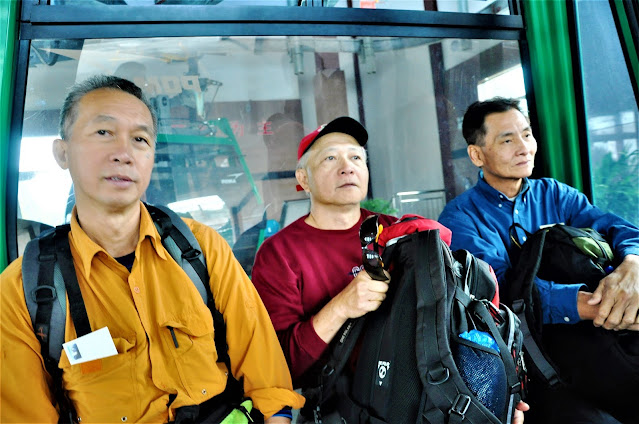






































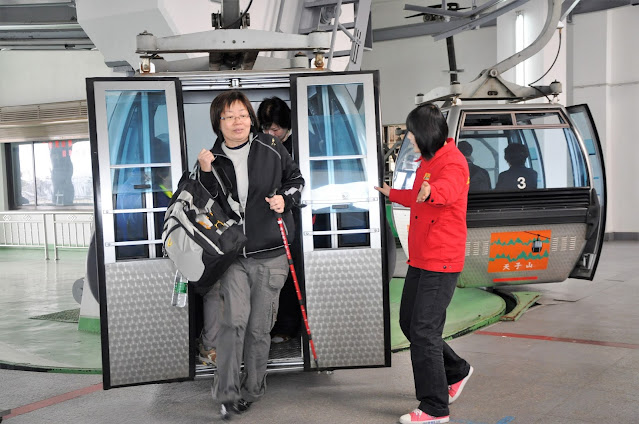



























































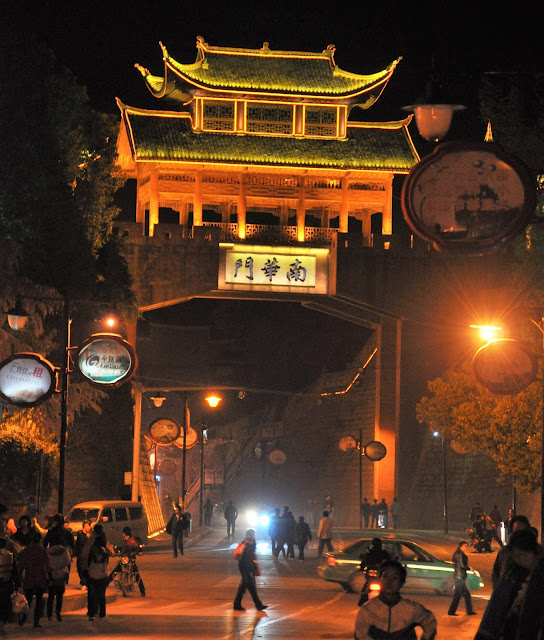











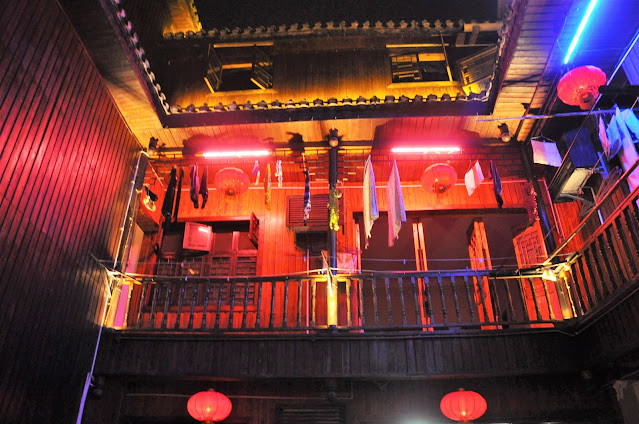











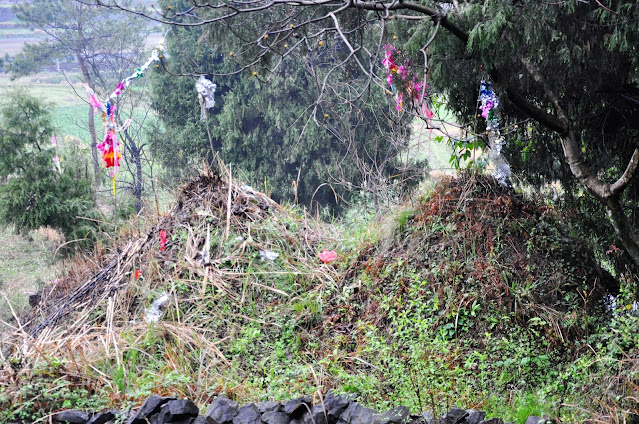



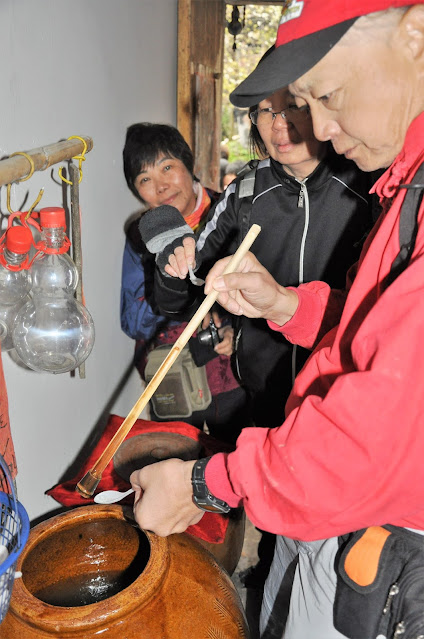









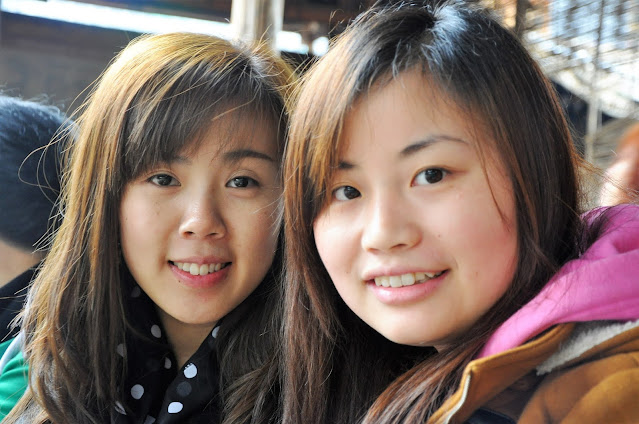












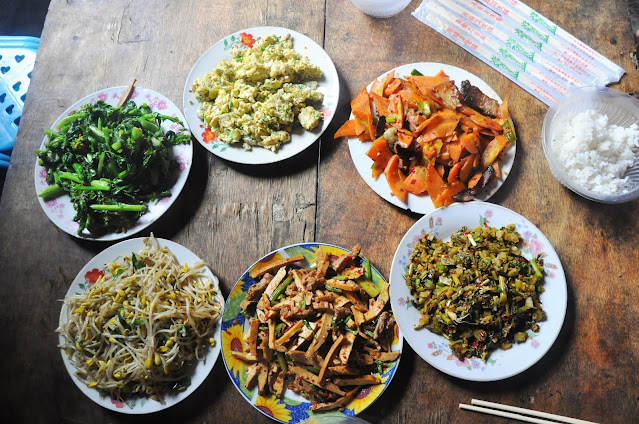



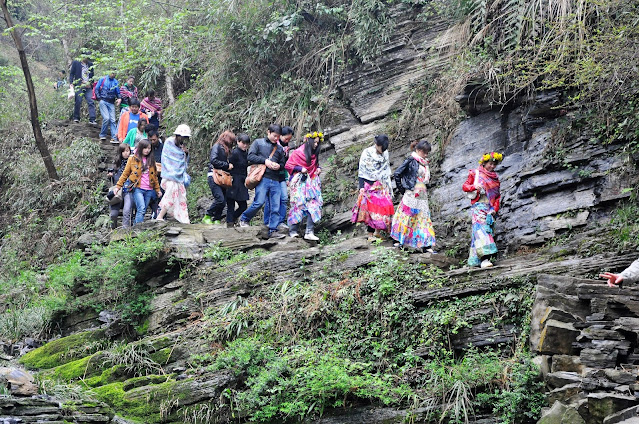



























No comments:
Post a Comment